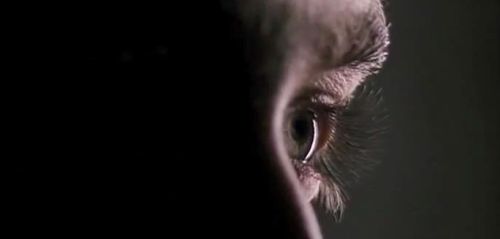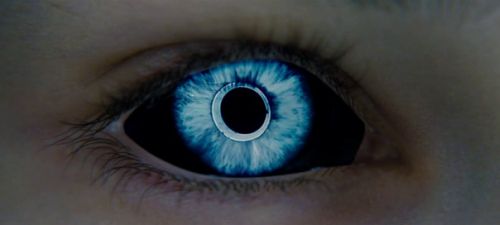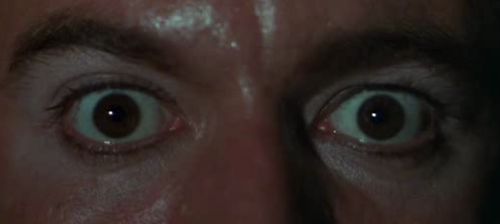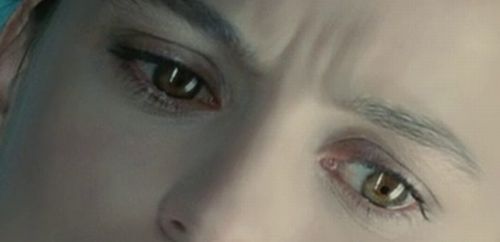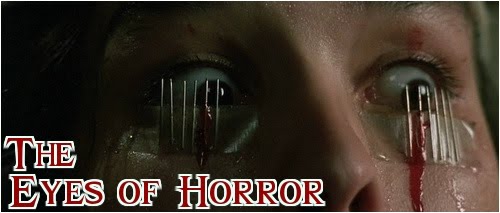
I watched
Bridesmaids for the second time on Saturday night.
It wouldn't have ordinarily been a movie that jumped to the top of my re-watch list. I ranked it only 40th out of the 121 movies I saw in 2011. But my wife hadn't seen it, and desperately wanted to remedy that before more of the movie's surprises were ruined for her. (She knew pretty much everything that happened at the bridal shop, for example.)
I liked it quite a bit -- I don't consider 40th to be a particularly low ranking last year -- so I was happy to watch it again.
And as it turned out, if I'd watched it this way the first time -- at home, with my wife -- it might have ended up closer to 20th.
See, I was laughing my fool head off this time around. It wasn't that I hadn't found it funny the first time around, because I did. But I don't recall going into fits of laughter as I did this time. What makes that all the more unusual is that a movie is supposed to be its funniest the first time you see it. Even with a movie that's hilarious, there are diminishing returns on repeat viewings because nothing that happens is a surprise to you.
I attribute my reaction to one of the following two things:
1) Comedies are best when watched with someone else.
2) Comedies are best when watched at home.
Until recently, I'd considered the first to be the primary factor. My go-to example had been the Judd Apatow comedies
The 40 Year Old Virgin and
Knocked Up, both of which I saw in the theater. I saw
The 40 Year Old Virgin with my wife (then girlfriend) and one other couple, and I saw
Knocked Up by myself. I suspect that
The 40 Year Old Virgin is just a funnier movie in general, but since these movies are both from the same director and are both well-liked, they seemed like good apples to compare to each other. When the fits of hysterical laughter from
Virgin didn't travel over to
Knocked Up, I concluded that the difference in company was to blame. (I shouldn't rule out that we saw
Virgin at night in a packed theater, and I caught
Knocked Up after work in a theater that was less than half full.)
I may never know how much of a difference it would have made if my wife had seen
Knocked Up with me. But I
can say that I watched
Bridesmaids under very similar circumstances -- on a weekday afternoon, by myself.
The mandate to see funny and popular movies in the theater is a strong one if you're a movie buff. But the problem is, my wife and I have rarely gone to the theater together since my son was born -- maybe only a half-dozen times. She's my primary movie-watching partner, but she's not my only one. I do still go to the movies with friends from time to time, but that has gone way down in recent years.
I think I've determined that if I'm going to see a popular comedy in the theater, I need to go with a friend. If I go by myself, I'm just setting myself up to fail.
The last time I remember really laughing out loud in the theater by myself was when I saw
Tangled, the day before Thanksgiving in 2010. There was this one line that hit my funny bone so hard, I hadn't fully calmed down for about a minute afterward. But the reasons I loved
Tangled had little to do with it being funny. So this is not a pure example.
It's hard to determine what should be the minimum threshold for how funny I thought something was in order to qualify for this discussion, but going backward through my list, the previous movie I thought was really funny that I watched by myself was Woody Allen's
Whatever Works, all the way back in January of 2010. But I watched that one at home, not in the theater.
So that makes a good transition point to the other half of the discussion: the venue where you see the movie.
The funniest four movies I saw in 2011 --
Tucker and Dale vs. Evil,
Hall Pass,
A Good Old-Fashioned Orgy and
Paul -- were all movies I saw in a home setting, with at least one other person. The first three I saw with my wife, though one of them was in a cabin where we were staying, which just felt like a home. The last was with two other friends at one of their homes.
Is it really possible that comedies are best when watched at home?
I'm starting to think that one of the keys of watching a good comedy is feeling comfortable. When you're at home, you usually sit in a comfortable chair, and you have whatever food or drink you may want at your disposal. And if you're watching with friends -- as I think we've determined you should be -- then you are in a good mood because it's all part of a fun social experience. What's more, you can laugh freely and as hard as you want without being self-conscious about how strangers are perceiving you.
Of course, there could be other factors involved -- namely, that comedies represent a greater risk to us, so we don't want to spend the money to see them in the theater. I can tell you that of the movies listed above, none of them were movies I thought would be good, so there was never any question of whether I might see them in the theater. The fact that they ended up being good is probably part of why I enjoyed them so much, since we are always happy when a movie pleasantly surprises us. But the point is, maybe we see more comedies at home in the first place, because paying theater prices for something that ends up being unfunny is more of a disappointing experience than paying theater prices for a blockbuster that doesn't deliver. With that blockbuster, at least we were probably impressed on some level by a special effects spectacle, one that was all the more grand because we saw it on a big screen. Comedies don't have the lure of spectacle to fall back on.
Whatever the true factors may be why we laugh or don't laugh at the movies, I've reached a point where I'm going to set myself some new ground rules.
1) If I feel compelled to see a comedy in the theater, I should find someone to see it with. This will be nice, because it'll get me back into seeing movies as a social experience with friends. If I feel self-conscious about this for whatever reason -- though I don't know why I should -- I can always explain to that friend that I've got a new policy for watching comedies. As if I should need an excuse for getting together with friends at all.
2) If I can stand to wait, I should watch the comedy at home with my wife. The conditions to laugh will be much better. After all, our senses of humor are so similar that we tend to build off each other, so that the movie gathers steam and becomes funnier and funnier as we watch. Not to mention that we can then quote the funny lines to each other later on, something we would be less inclined to do if we saw the same movie separately, even if we found the same lines funny.
So the next time you hear me talking about taking advantage of an early release from work to sneak off to the theater and watch the next Will Ferrell comedy, remind me of this post, will you?




